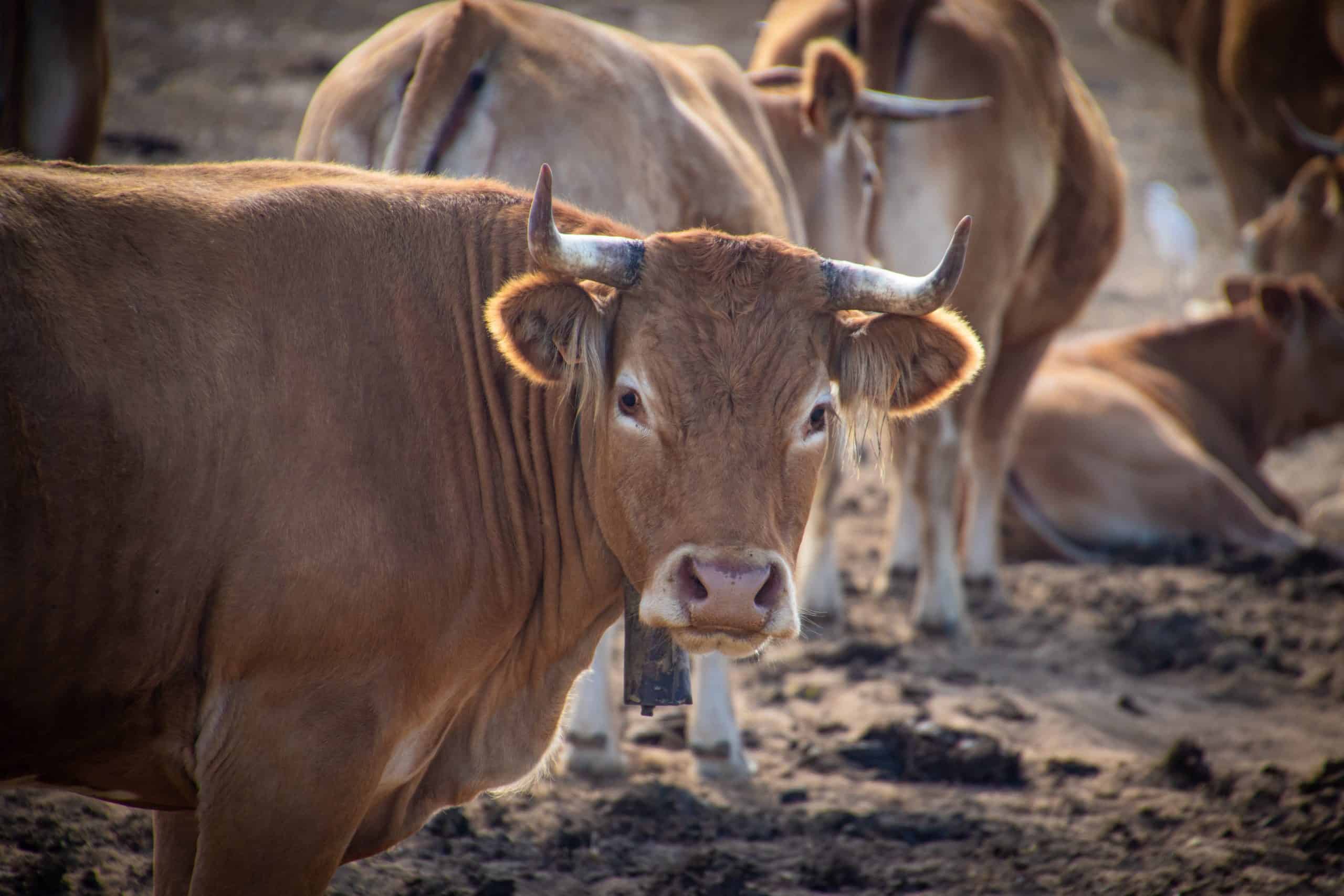
Methane from factory farmed animals are a major contributor to climate change, luckily we have the power to curb these emissions with our food choices.
The vast majority of scientists agree that human-caused climate change has played a major role in the recent wildfires and tropical storms that have devastated communities around the world. With global temperatures creeping up and the consequences devastating millions, it’s become more and more apparent that urgent action is needed. While corporations are largely responsible for much of the destruction we see, the power of the consumer to advocate for change cannot be underestimated. One of the first things we can do is examine what we choose to eat and question what the costs of our diets really are.
Cattle, bison, sheep, and goats are all examples of ruminant animals (animals that have four-chambered stomachs) The diet of ruminant animals consists of plants, which are composed of cells with cellulose cell walls. Cellulose can only be digested by an enzyme called cellulase, which is not produced by most animals. When we consume plants, cellulose is not broken down and is excreted as waste. This is because we lack gut microbes that can produce cellulase This is not the case for ruminant animals, who undergo a different digestive process, the byproducts of which cause immense damage to our environment.
Among ruminant animals, cattle are the biggest contributors to greenhouse gas emissions. When cows consume grass, they swallow it without chewing. The grass is pushed down the esophagus and into the rumen, where salivary enzymes and microbes continue the process of digestion and nutrient absorption. Cellulose is broken down into volatile fatty acids that can be used by the cow. The food forms into cud and is passed into the second chamber, the reticulum, where it is regurgitated. The cow chews the cud for a second time before swallowing it again. The cud passes through the rumen and enters the reticulum once more to be further digested by bacteria. When it is almost fully digested, both the cud and the bacteria enter the third chamber, the omasum, which continues nutrient absorption and reabsorbs water before passing the food and bacteria to the abomasum. Acidic gastric juices complete digestion and kill bacteria, which provide the cow with nutrients and amino acids for protein-building. Any remaining food leaves the stomach and is excreted.
This process is called enteric fermentation, and while it helps animals like cows make efficient use of their food, it has severe implications for our planet. The breakdown of cellulose results in the formation of hydrogen gas, carbon dioxide, and acetate. These elements and compounds react to form methane and more carbon dioxide, which are expelled by cows through belching and enter our atmosphere. Carbon dioxide and methane are both greenhouse gases, which means they absorb radiation reflected by Earth’s surface. This traps heat in the atmosphere, causing rising global temperatures that have detrimental effects for the environment.
According to the Environmental Protection Agency (EPA), 8.3 percent of U.S. carbon dioxide emissions in 2014 resulted from agriculture. In 2018, enteric fermentation comprised 28 percent of U.S. human-related methane emissions, and manure management 10 percent. Recent research out of NYU and Johns Hopkins estimates that the actual amount of emissions is 39 to 90 percent higher than previously assumed. This means that not only does animal agriculture produce large quantities of carbon dioxide and methane, it’s actually a leading contributor to methane emissions.
It’s not just our breeding of so many ruminant livestock that harms the environment, it’s also the way we treat them. In our current agriculture system that relies on concentrated animal feeding operations (CAFO’s) and views sentient beings as nothing more than objects to profit from, animals are kept in terrible living conditions and often fed cheap and unnatural food like corn and soy In fact, the EPA states that lower quality feed can cause more methane emissions by livestock.
Ruminant animals and natural gas and petroleum systems produce roughly the same amount of methane, yet people are quick to point to the oil industry when addressing climate change while ignoring the statistics about animal agriculture. Of course, climate change has a slew of causes, and major reform in many industries is needed to truly solve this issue, but the agriculture industry plays a significant and often unaddressed role in this problem.
In recent years, the issue of methane emissions from cows has received more attention, but most researchers focus their efforts on preventing cows from producing methane. This is a flawed approach, ignoring the root of the problem and searching for solutions that are less effective and more difficult and costly than simply reducing our meat consumption. Rather than further manipulating cows’ diets, selectively breeding cattle for reduced methane production, or spending time, effort, and money on other band-aid solutions, we should look at our own plates and ask ourselves whether we want to continue perpetuating such a destructive industry.